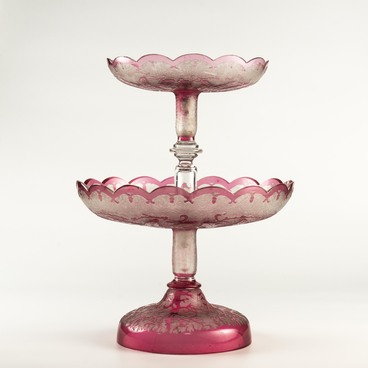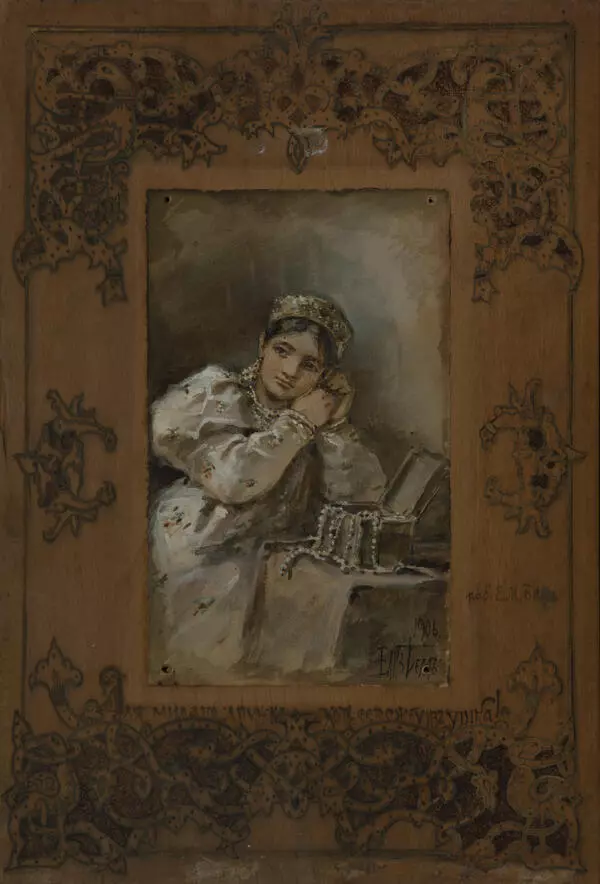In the second half of the 19th century, the Dyatkovo Crystal Factory scaled up production, installed state-of-the-art equipment, improved the technologies, and developed various approaches to the shaping and decoration of products. During that period, decorative and applied art showed unprecedented interest in Russian folk art which was reflected by the products of the Dyatkovo Crystal Factory. The Russian style at its finest was represented by the art of Elizaveta Boehm. Inspired by the tableware of pre-Petrine Russia, including grace cups, small glasses, and buckets, the artist created her most famous works which gained widespread recognition not only in Russia but also abroad.
The Crystal Museum houses the “Winter” set that was created using the etching technique and subsequent painting with enameling in high relief. The items in this set seem to have grown out of a thick ice sheet which is emphasized by the stoppers in the shape of ice crystals with bubbles frozen inside, and the same style of the thick base of the glass. The frosted and seemingly foggy surface of items is painted with finely detailed snowflakes while the upper part has a relief painting with white enamel imitating frozen flowing water. The pitcher is encircled by an inscription which is an integral part of its decoration: “If not wine, then beer; if not beer, then kvass; if not kvass, then frozen water.”
The use of Russian sayings and proverbs for product decoration was typical of the art of Elizaveta Boehm. Her products were not included in the factory’s price lists and were produced in limited edition, but nevertheless gained widespread popularity. This can be explained not only by their exceptional artistic merits but also by the fact that they offered a romantic interpretation of the past and were unmistakably Russian. Elizaveta Boehm achieved great success because her art was based on detailed study and deep perception of folk art and the legacy of Dyatkovo blowers. She became a professional artist who used local traditions, her own talent, and the history of international art to develop a new direction in the factory’s work.
The Crystal Museum houses the “Winter” set that was created using the etching technique and subsequent painting with enameling in high relief. The items in this set seem to have grown out of a thick ice sheet which is emphasized by the stoppers in the shape of ice crystals with bubbles frozen inside, and the same style of the thick base of the glass. The frosted and seemingly foggy surface of items is painted with finely detailed snowflakes while the upper part has a relief painting with white enamel imitating frozen flowing water. The pitcher is encircled by an inscription which is an integral part of its decoration: “If not wine, then beer; if not beer, then kvass; if not kvass, then frozen water.”
The use of Russian sayings and proverbs for product decoration was typical of the art of Elizaveta Boehm. Her products were not included in the factory’s price lists and were produced in limited edition, but nevertheless gained widespread popularity. This can be explained not only by their exceptional artistic merits but also by the fact that they offered a romantic interpretation of the past and were unmistakably Russian. Elizaveta Boehm achieved great success because her art was based on detailed study and deep perception of folk art and the legacy of Dyatkovo blowers. She became a professional artist who used local traditions, her own talent, and the history of international art to develop a new direction in the factory’s work.








